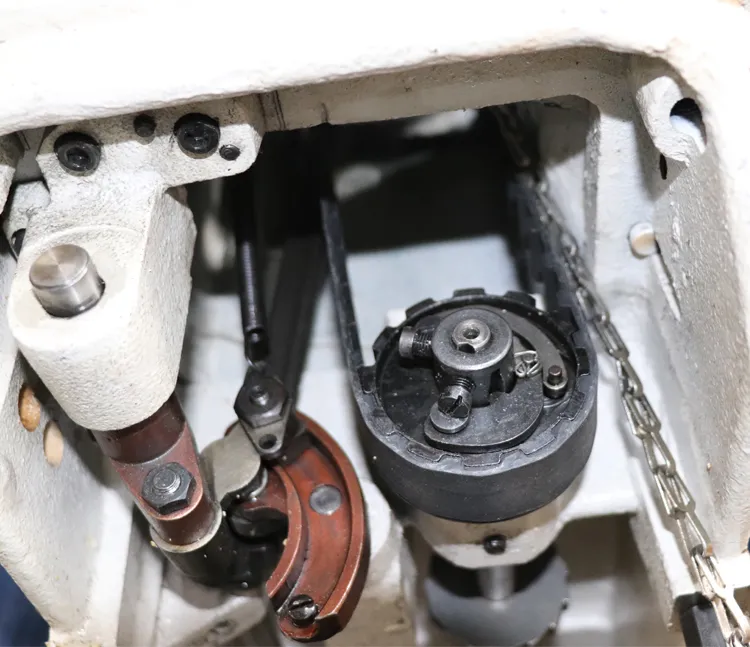sewing heavy material
Sewing Heavy Material Tips and Techniques for Success
Sewing with heavy materials can be both challenging and rewarding. Whether you're crafting thick curtains, constructing upholstery for furniture, or making durable outdoor gear, the techniques and tools you use can make a significant difference in the quality of your finished product. In this article, we'll delve into some essential tips and tricks for sewing heavy materials effectively, ensuring that your projects turn out beautifully.
Understanding Heavy Materials
Before diving into the sewing process, it's crucial to understand what constitutes heavy materials. Fabrics such as canvas, denim, leather, and thick upholstery fabrics fall into this category. These materials often require different handling compared to lightweight fabrics. Their density and weight can complicate sewing, particularly when it comes to handling, cutting, and stitching.
Choosing the Right Tools and Equipment
One of the most important aspects of sewing heavy material is having the appropriate tools
. Here are some essentials1. Sewing Machine While most standard sewing machines can handle moderate-weight fabrics, for heavy materials, it is advisable to use a heavy-duty sewing machine. These machines are designed to handle thicker fabrics, with stronger motors and reinforced structures.
2. Needles Use heavy-duty or specialty needles. A size 14 or 16 universal needle typically works well for many heavy fabrics. If you're working with leather or canvas, consider using a leather needle or a denim needle, which has a sharper point to penetrate the layers of fabric more effectively.
3. Thread Selecting the right thread is also vital. Opt for polyester or nylon threads, as they tend to be stronger and more durable than cotton threads, which can break under stress.
4. Foot Attachments A walking foot can be particularly beneficial when sewing thick layers, as it helps move the fabric smoothly through the machine, preventing puckering or uneven stitching. A teflon foot is also useful for materials like leather, as it prevents the fabric from sticking to the presser foot.
Preparing Your Fabric
sewing heavy material

Preparation is key when working with heavy material. Start by pre-washing and drying your fabric to allow for any shrinkage. When cutting, use a rotary cutter and self-healing mat for more precise and clean edges. Heavy materials can often shift during cutting, so ensure the fabric is flat and secure.
When marking your fabric, avoid traditional fabric chalk, which can be difficult to remove from heavier materials. Instead, use tailor’s chalk or fabric markers that wash out easily to ensure that your markings are clear and will not damage the fabric.
Sewing Techniques
When it comes to sewing the fabric, there are several techniques to keep in mind
1. Sewing in Layers For items like bags or quilts that may have multiple layers, consider using the basting method. This involves temporarily stitching the layers together with long, loose stitches before sewing them together with your regular seam. This helps to keep everything aligned.
2. Adjusting Tension and Speed Heavier fabrics may require adjustments in your sewing machine’s tension settings. Start with a medium tension and test on a scrap piece. Additionally, sew at a slower speed to maintain control over the fabric and prevent any mishaps.
3. Finishing Seams Heavy materials can fray just like lighter fabrics, so it’s important to finish your seams. Options like serging, using pinking shears, or binding seams with bias tape are all excellent ways to keep your project looking neat and professional.
Final Touches
Once your project is complete, take some time for the finishing touches. Use an iron to press the seams, being cautious with heat-sensitive fabrics. Paying attention to detail can elevate your project from decent to outstanding.
Conclusion
Sewing heavy materials may present its challenges, but with the right tools, techniques, and a little practice, you can achieve beautiful results. Whether you’re making a functional item or a piece of art, the satisfaction that comes from working with durable fabrics is well worth the effort. Happy sewing!
-
Industrial Cylinder Arm Sewing Machine: Revolutionizing Heavy-Duty SewingNewsJul.28,2025
-
Cylinder Arm Sewing Machine: Perfect for Special Sewing ApplicationsNewsJul.28,2025
-
Cylinder Bed Sewing Machine: Essential for Sewing Complex MaterialsNewsJul.28,2025
-
Heavy Duty Sewing Machine: The Essential Tool for Industrial ApplicationsNewsJul.28,2025
-
Computerized Pattern Sewing Machine: Revolutionizing Precision StitchingNewsJul.28,2025
-
Heavy Duty Industrial Sewing Machine: Power Meets PrecisionNewsJul.28,2025
-
Leather Sewing Machine: The Industrial Standard for Tough MaterialsNewsJul.18,2025





























